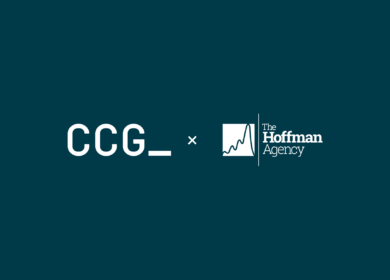
A decade ago, global campaigns followed a familiar formula. A central hub set the strategy, regional offices executed, and as long as you had boots on the ground in key markets, you could claim to be a truly global agency. But let’s be real: things were a lot simpler back then. Market dynamics were more predictable, industry disruptions moved at a manageable pace, and a one-size-fits-all approach to global communications was good enough.
Today? Not so much. The world has shifted, and the old ways of operating just can’t keep up. Speed, agility, and intelligence now determine success. Yet, many agencies are still clinging to outdated hub-and-spoke models that were designed for an era when tech cycles were longer, news didn’t break at lightning speed, and geopolitical landscapes weren’t shifting on a daily basis.
Consider this: In the 1980s, news stories unfolded over hours; today, we operate in a “24-second news cycle,” where information spreads instantaneously across multiple platforms. This acceleration means that PR professionals must react in real time, a demand that the traditional hub-and-spoke model struggles to meet. Moreover, a 2024 survey revealed that 92% of PR professionals feel that work-related stress has negatively impacted their mental health, with 38% experiencing stress several times a week. The primary stressors include predicting outcomes, securing media coverage, and proving PR value — tasks that have become much harder in today’s expeditious environment.
To put it plainly, the hub-and-spoke model was built for a different age. In this new reality, global success isn’t about the number of offices on a map. It’s about the chemistry, collaboration, and real-time intelligence that teams bring to the table.
The World Has Changed, and So Must the Way We Work
To understand why old models are failing, we must look at how the landscape has evolved.
Ten years ago, the industry was buzzing about cloud computing. Today, it underpins almost everything. AI is no longer a vague concept — it’s reshaping businesses as we speak. Trade wars and geopolitical tension are influencing everything from supply chains to regulatory shifts. The way businesses communicate, operate and grow is being rewritten almost daily.
Adding to the complexity, impulsive political figures like President Donald Trump have a profound impact on the media landscape. Actions such as reshaping media access and influencing news cycles have forced communications professionals to navigate an ever-changing, unpredictable media environment like never before.
For marketing and PR, this means a rigid global model just won’t cut it anymore. You can’t afford to wait for approval from a central hub while markets demand immediate responses. You need local expertise, faster decision-making, and built-in agility to pivot when — inevitably — the landscape shifts under your feet.
Agility, Not Bureaucracy, Wins in a Multimarket World
One of the biggest downfalls of the hub-and-spoke model is its rigidity. Plans get locked in, processes get bogged down in approvals, and by the time you’re ready to act, the moment has passed. Today, the best-laid plans are almost guaranteed to change. The ability to pivot quickly and effectively is no longer desirable but essential.
Take media relations as an example. In today’s world, a breaking news event — be it AI regulations, a major acquisition, or new trade policies — can completely shift the media agenda. Teams need the flexibility to react, adapt, and shift strategies at the drop of a hat. That requires an operating model built on collaboration, shared intelligence, and trust between markets, not top-down command and control.
This shift also demands a change in mindset. Global work can’t be executed by isolated teams working in silos; it requires a cohesive, collaborative approach. For instance, if a planned announcement in Singapore coincides with a major local news event, a flexible team can prioritize another market where the media landscape is more favorable, ensuring optimal coverage.
The New Success Criteria: Collaboration, Chemistry, and Intelligence
For years, global scale was the defining factor in multimarket campaigns. If an agency had people in the right markets, it was assumed they could handle global work. But let’s flip the script: scale alone isn’t enough. The real success factors today?
- Collaboration: Teams that genuinely work together across markets, not just coordinate
- Chemistry: Solid relationships between teams that build trust and efficiency
- Shared Ownership: A collective mindset where every market is accountable for success
- Intelligence: Real-time market insights and the ability to act on them instantly
If you’re a client evaluating an agency’s multimarket capabilities, it’s time to start asking different questions. Instead of just checking whether they have offices in key locations, ask how often those teams work together. Do they share insights regularly? Have they delivered results under pressure? Do they have a track record of navigating complex, fast-changing situations as a unified front?
The Hive Jive: A New Approach to Multimarket Success
At The Hoffman Agency, we’ve ditched the hub-and-spoke model for something better: the Hive Jive. It’s how we work — deeply connected, highly collaborative, and always in sync.
This mindset, approach and operating model is built on key principles: geo-agnostic hubs where every market can lead, democratic leadership that taps the best insights from all regions, and marketing autonomy that balances local flexibility with global alignment. But the real game-changer? Team chemistry. We don’t just collaborate on paper — we work together daily, building trust and having each other’s backs. And in PR, that’s everything. A team that clicks is a team that delivers, especially when things get tough.
And here’s where our ‘One P&L’ model makes all the difference – we don’t just operate in silos with different profit centers. We share ownership, profits, and success across the board. Everyone has a stake in the outcome, and we all pull together toward one shared goal. This model enables agility, promotes camaraderie, and ensures everyone has skin in the game at every level.
Multimarket success isn’t about HQ dictating from the top. It’s about a network of experts who share intelligence, anticipate challenges, and adapt instantaneously. It’s not just where people sit; it’s how they work together. The future of PR is collaborative, intelligent, and fast — and that’s how we roll.

